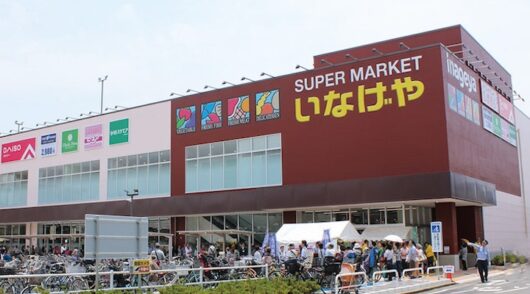Nine out of 10 Hong Kong shoppers have abandoned a purchase in store during the last year due to excessive queues, according to research.
While Hong Kong “pop psychology” has long held that people in the territory are drawn to long queues for fear of missing a bargain, a new report from 451 Research, commissioned by payments platform Adyen, reveals shoppers frustrated by long queues have cost the city’s retailers more than US$2.35 billion over the last year.
The report pointed to lost retail revenue of $1.26 billion from long wait-to-pay times, of which $1.09 billion is attributed to shoppers opting out of long queues to try another store for the purchase, while the remaining shoppers did not purchase products at all. Five to 10 minutes is viewed as an acceptable waiting time to complete a purchase by 57 per cent of Hong Kong shoppers. Waiting longer than 10 minutes is the tipping point to decide at which shoppers simply leave the store without making the purchase or to try another store, according to the research.
Warren Hayashi, president at Adyen, Asia-Pacific, says creating a frictionless and convenient customer journey across offline and online sales is essential to converting shoppers into loyal customers.
While in-store purchases still dominate Hong Kong retail, online buying has made notable in-roads in some sectors namely the hospitality and grocery shopping industries. Hong Kong’s preference for grocery shopping online stands out in the report as the city led all regions surveyed including: Singapore, Australia, the US and Europe, with one-in-five Hongkongers preferring to order groceries online.
“In a city with a convenience store on every corner, conventional wisdom dictates that location and inventory should correlate to success – however research from Adyen points to specific category of shoppers, Spendsetters who are eager to embrace newer shopping experiences where technology marries with offline retail to create a truly frictionless buyer journey,” the report said.
“New technologies are offering new engagement channels or touchpoints to excite and retain digital-savvy shoppers from Hong Kong, China and abroad,” said Hayashi. “The future of retail lies in merchants’ ability to shift to unified commerce, where customers – not sales channels – dictate the terms of interaction. Local retailers should evolve their unified commerce strategy around digital-savvy ‘Spendsetters’ who have the biggest appetite for digital shopping experiences and, more importantly, set trends for how people will shop and spend in future.”
The value of the brand is also crucial with 37 per cent of Hong Kong consumers saying they are willing to pay a premium for a brand experience.
“This points to a major opportunity for Hong Kong retailers to develop new channels of engagement and explore new digital solutions in-store such as augmented reality apps to offer shoppers additional information to support their decision making, like digital mirrors in dressing rooms and “connected” store associates.”
About half of Hong Kong consumers fall into the “Spendsetters” category as opposed to “Resisters” who represent just 3 per cent of local survey respondents. “Resisters” are defined as less enthusiastic about new technology and slower to adopt it. People who don’t fit into either category are “Fencesitters” (44 per cent), who are characterised by a propensity to evolve into “Spendsetters” as they assimilate more digital technologies into their daily lives, said the report.
“Understanding the needs of “Spendsetters” and “Fencesitters” is crucial for retailers to formulate a unified commerce strategy and understand changing shopping behaviour across sales channels.”
The report also highlighted consumer preferences that can increase brand loyalty. Some 54 per cent of Hong Kong shoppers said the ability to check if an item is available online before going to the store would strengthen brand loyalty. Other loyalty boosters include: the ability to exchange or return an online or in-app purchase in-store, cited by 48 per cent of respondents, while 41 per cent said the ability to reserve items online, in-app or on the phone and then pay and collect the purchase at a store would increase brand loyalty.
Opportunity cost
Beyond long queues and wait times, the report cited merchants’ failure to offer shoppers’ preferred payment methods as another source of lost revenue. When familiar and trusted payment methods were unavailable, 34 per cent of shoppers left the store to make their purchase elsewhere. The reaction of another 22 per cent of respondents was to spend significantly less. This failure to meet customer expectations cost Hong Kong retailers $68.5 million over 12 months.
The report found that 62 per cent of the city’s shoppers cite credit cards as their preferred payment method, followed by 56 per cent who prefer cash, 24 per cent that cite contactless payments and 22 per cent that noted options such as Apple Pay, Google Pay and Samsung Pay. Cashless payment methods like digital wallets have gained strong traction due in part to aggressive marketing by Alipay, Tap & Go and WeChat Pay.
Some 40 per cent of shoppers said contactless cards would improve their in-store experience, while 37 per cent preferred mobile wallets. Alipay and WeChat Pay were specifically noted by 33 per cent of shoppers as enhancing their in-store experience. Asked which payment methods would most likely convert them from shopper to buyer, 40 per cent of Hong Kong respondents said self-checkout, 37 per cent said contactless cards, and 21 per cent said biometric payment options.
Retailers lose US$2.35 billion as queues deter Hong Kong shoppers






